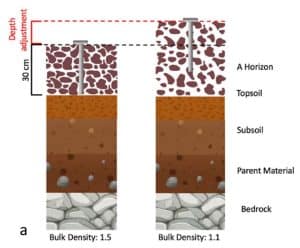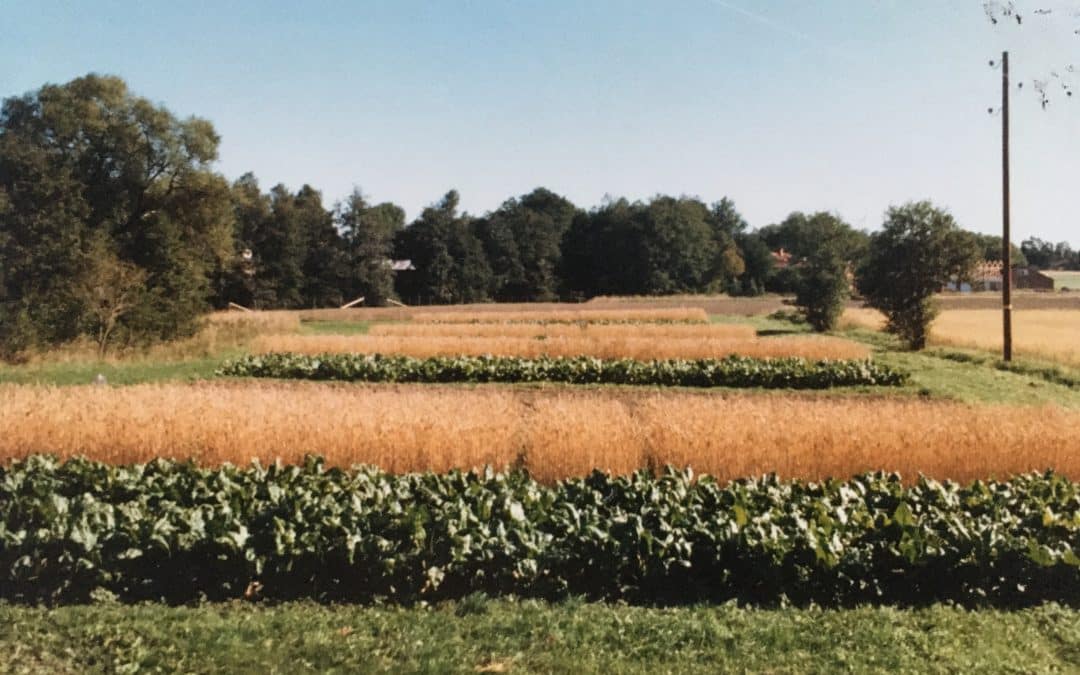
Soil before (left) and after (right) improved organic management. The change in porosity means less soil is measured per unit volume resulting in under estimation of soil carbon stored.
Farm researchers measuring carbon know the challenge of many errors: how to correct for the carbon stored per acre when the actual volume density of soil is unknown and changing. Over time, soil porosity alteration not accounted for can lead to significant errors or false assessments in carbon gains. This, in turn, could mean under or over-payment in carbon markets. Ironically, this could mean underpayment for improved management and overpayment for poor management (which compacts soil). A new paper in Nature- Scientific Reports co-authored by Woods End’s Dr. Brinton proposes a standardized correction method to avoid this error.
Brinton first observed that soil bulk density may obscure improvements when, as a grad student in Sweden, he joined a team testing 17-year soil plots. The difference between the original soil (control) and improved (organic) management was a 29% reduction in soil volume, favoring lighter soils with improved practices. This dilemma was recently recognized by Dr.s Basso (MSU) and Brinton (WEL) as a research question on the Caney Fork Farm in Tennessee which sought to assess current and future carbon gains against a changing background. With the assistance of MSU scientists Fowler and Millar, the team arrived at a solution to correct for the “error of appearance” when soils change volume during a carbon measurement cycle (see figure).
Woods End soil lab plans to implement the “raising the bar” campaign by utilizing the correction equation for all long-term soil monitoring projects.

